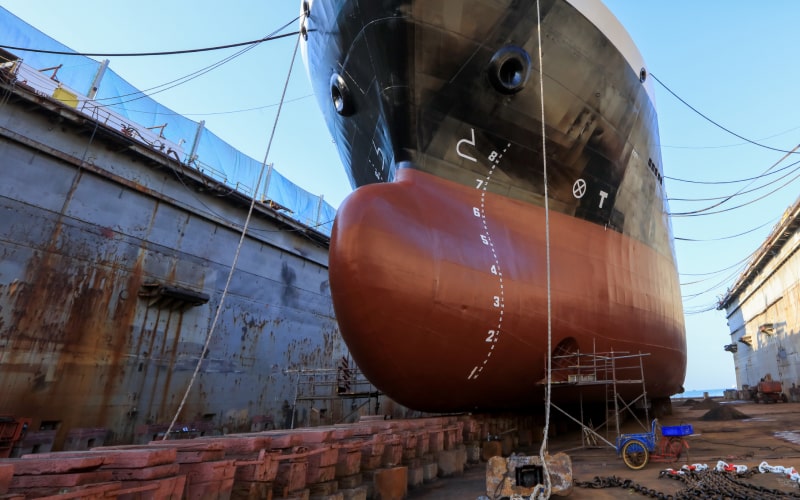Have Specs Ready? Send Us Your RFP for a Fast, Competitive Quote.
Save Big on 36×48 Sheets – Better Yields, Lower Shipping.
Shop Stainless Tubing – Huge Selection, Lower Shipping Rates.


Marine grade metals, also known as marine alloys, are metals specifically designed and chosen for their enhanced corrosion resistance and durability in marine environments. We carry numerous marine metal products in numerous shapes, alloys, and cut-to-size pieces.
Sport fishing and commercial vessels often use marine-grade aluminum sheet metal, which offers excellent workability, strength, and corrosion resistance. The commonly used alloys include marine-grade aluminum 5052 for optimal durability and cost-effective 6061 for slightly lower durability. Marine-grade aluminum I beams are also a versatile choice for structural applications.
Our online selection provides a wide range of marine-grade aluminum shapes and alloys to fulfill any maritime fabrication requirement.
Valued for its strong wear-resistance and non-magnetic and non-sparking properties, Beryllium Copper is the most commonly used metal in underwater telecommunications applications. This durable metal has high corrosion resistance for marine applications, while also being a thermally/electrically conductive metal.
Our marine grade beryllium copper alloy options include 172, 173 and MoldMAX HH.
Marine grade brass is also referred to as naval brass, and is commonly used to fabricate marine fittings, piping and pumps, as well as for use in decorative applications. The naval brass properties include additions of tin and zinc to make the marine brass more corrosion resistant for use in saltwater and other wet area applications.
For highly decorative and durable applications, the specialty Muntz Brass is also a popular choice, also available here in cut-to-size sheet options.
Both Silicon Bronze 655 and 954 are good choices for bronze marine hardware fabrication. While both bronze or brass for marine use are common choices, marine bronze is known to be more durable for the long haul and requires minimal maintenance to keep its nice appearance, while also being relatively easy to machine.
We offer this hard to find material in a variety of bar shape options, including hollow bar.
Most alloys of steel are not ideal for marine applications, however one marine grade steel that offers high strength, formability and corrosion resistance is A653 galvanized steel. In the galvanization process a layer of zinc is applied that makes galvanized steel in marine environments a durable choice for use in saltwater or other wet environments.
Our galvanized steel sheet is available in cut-to-size options for just the amount your project needs.
While there is not an officially named marine grade stainless steel, based on suitability of the application, the material gets this name, including both of the alloys “304 or 316 stainless steel marine grade.” The corrosion resistance and strength of stainless steel make it an excellent choice for fittings, fasteners and structures. Grade 316 stainless steel has the highest molybdenum content, and therefore the greatest corrosion resistance.
We offer a wide range of marine grade stainless steel materials from angle, to bars and marine grade stainless steel plate, with cut-to-size options, as well as new stainless steel fittings.
Nickel is prized for its ability to resist corrosion and oxidation while retaining its mechanical properties in both cryogenic and elevated temperatures. These qualities make nickel a common choice for use in subsea and other marine applications.
Check out our wide selection of nickel alloys round bar, round tube and sheet/plate.
Stainless steel and aluminum alloys are commonly regarded as the best metals for boat construction. Stainless steel, particularly grades 316 and 304, is chosen for its excellent corrosion resistance, strength, and durability. Aluminum alloys are favored for their lightweight properties, strength, and corrosion resistance, making them popular for hulls, decks, and structural components.
The best steel for marine use is typically stainless steel, specifically grades 316 and 304. These stainless steel grades offer exceptional corrosion resistance, making them suitable for marine environments. They are commonly used in various marine applications, including boat fittings, fasteners, rails, and propellers.
Copper-nickel alloys, particularly Cu-Ni 90/10 and Cu-Ni 70/30, are considered the metals most resistant to saltwater corrosion. These alloys exhibit excellent resistance to seawater, brackish water, and other corrosive marine environments. They are commonly used in marine applications such as heat exchangers, condensers, and piping systems where resistance to saltwater corrosion is crucial.
Ships are typically constructed using a combination of materials, including steel, aluminum, and fiberglass-reinforced plastic (FRP). Steel is commonly used for the structural framework of the ship due to its strength and durability. Aluminum alloys are utilized for lighter vessels or specific components requiring weight reduction. Fiberglass reinforced plastic (FRP) is used for smaller boats, yachts, and some specialized applications where lightweight construction and corrosion resistance are desired.
Navy ships prevent rust through the use of protective coatings, sacrificial anodes, and cathodic protection systems. These measures create a barrier between the metal surfaces and the corrosive marine environment, divert corrosion away from critical components, and provide controlled electrical currents to counteract corrosion. Regular maintenance and inspections are also conducted to detect and address any areas susceptible to corrosion.
The thickness of steel on a battleship can vary depending on the specific design and purpose of the vessel. In general, battleships typically feature hull plating that can range from several inches to over a foot in thickness, especially in critical areas such as the armored belt and turret armor. The thickness of the steel is determined by factors like the ship's intended role, desired level of protection, and advancements in naval warfare technology.
Yes, titanium can be utilized in certain applications on ships. Its excellent corrosion resistance, high strength-to-weight ratio, and resistance to biofouling make it suitable for components exposed to harsh marine environments. However, its higher cost compared to other metals like steel or aluminum limits its use to specific areas such as propeller shafts, heat exchangers, valves, and specialized equipment.